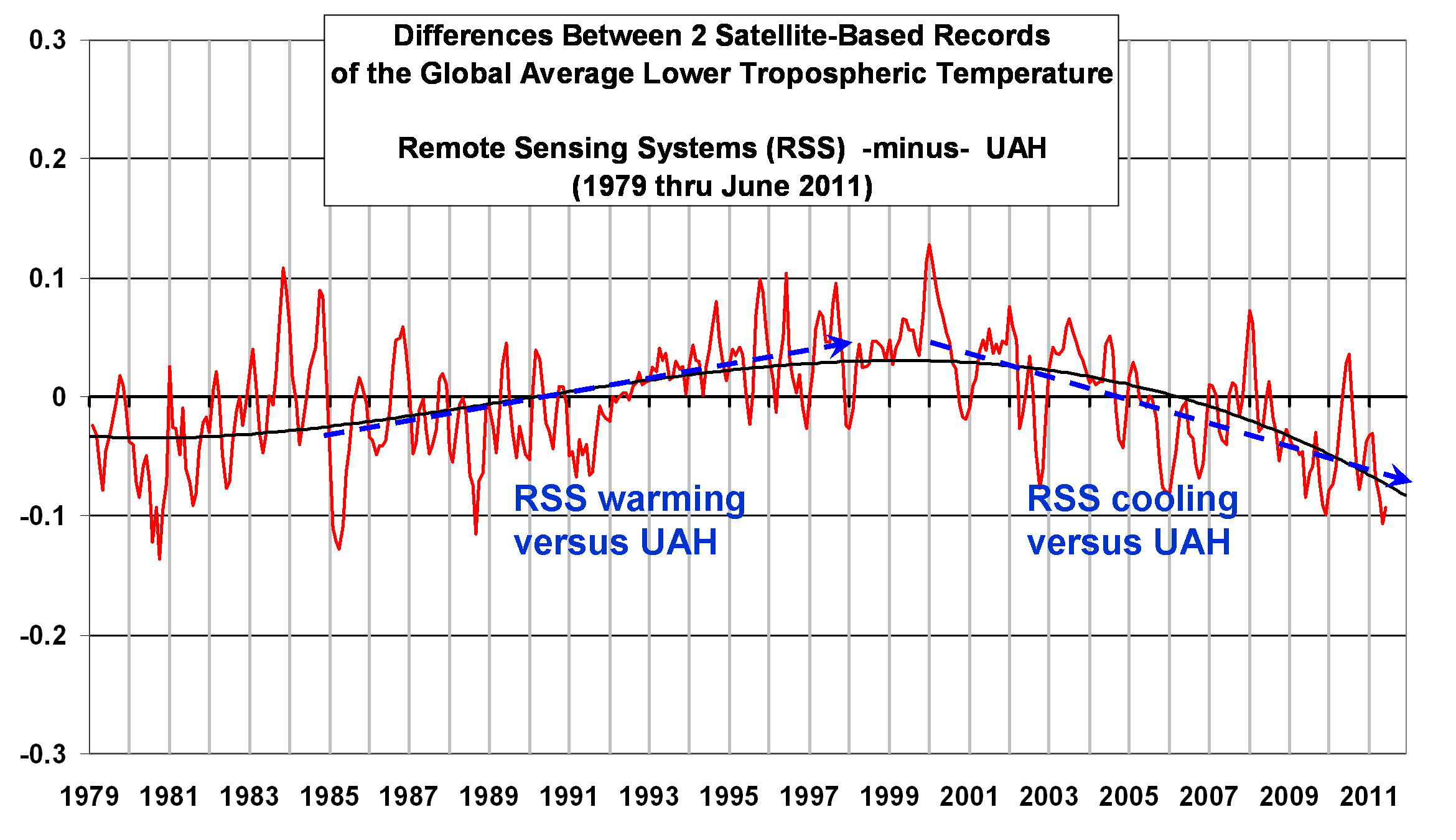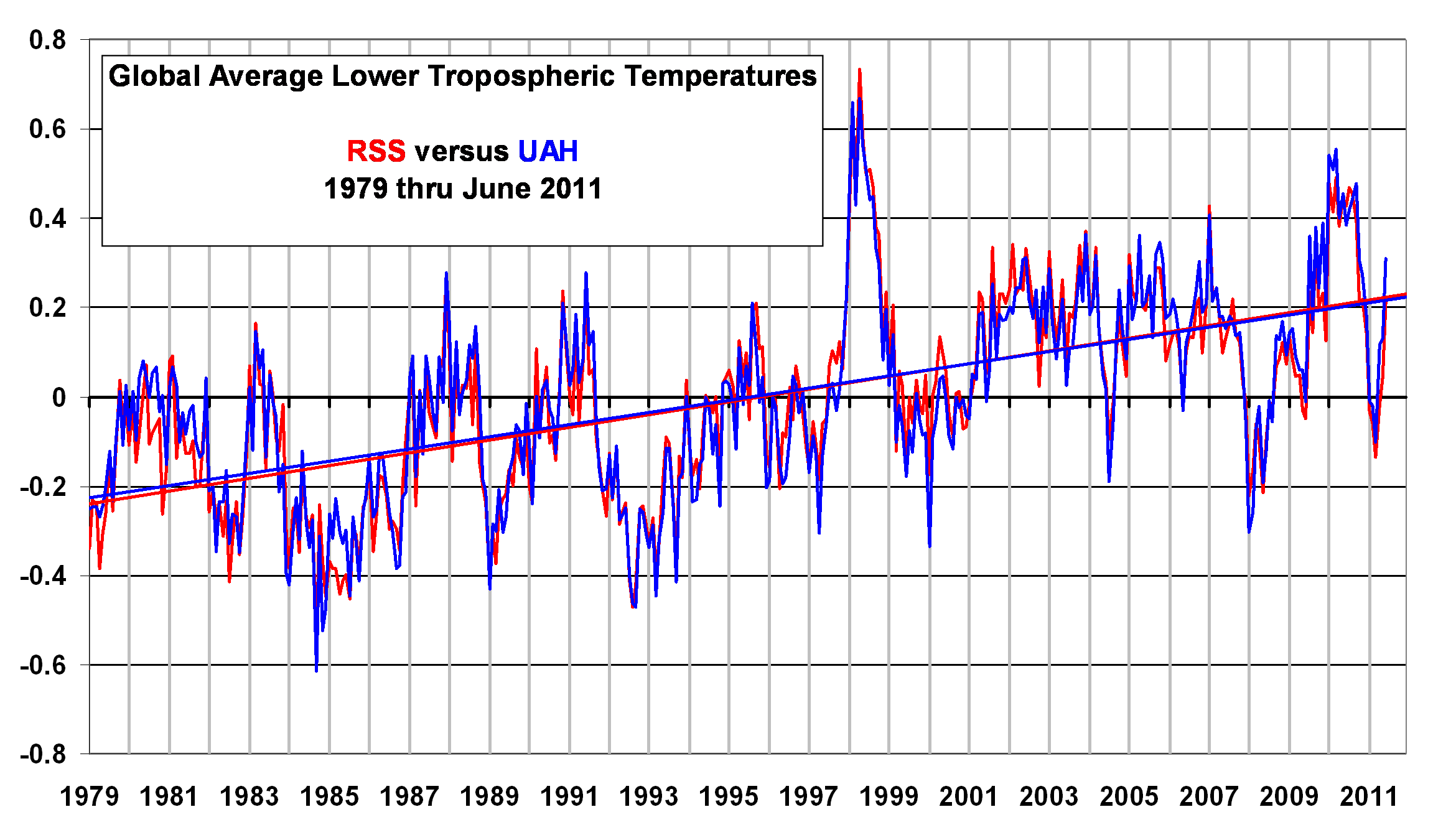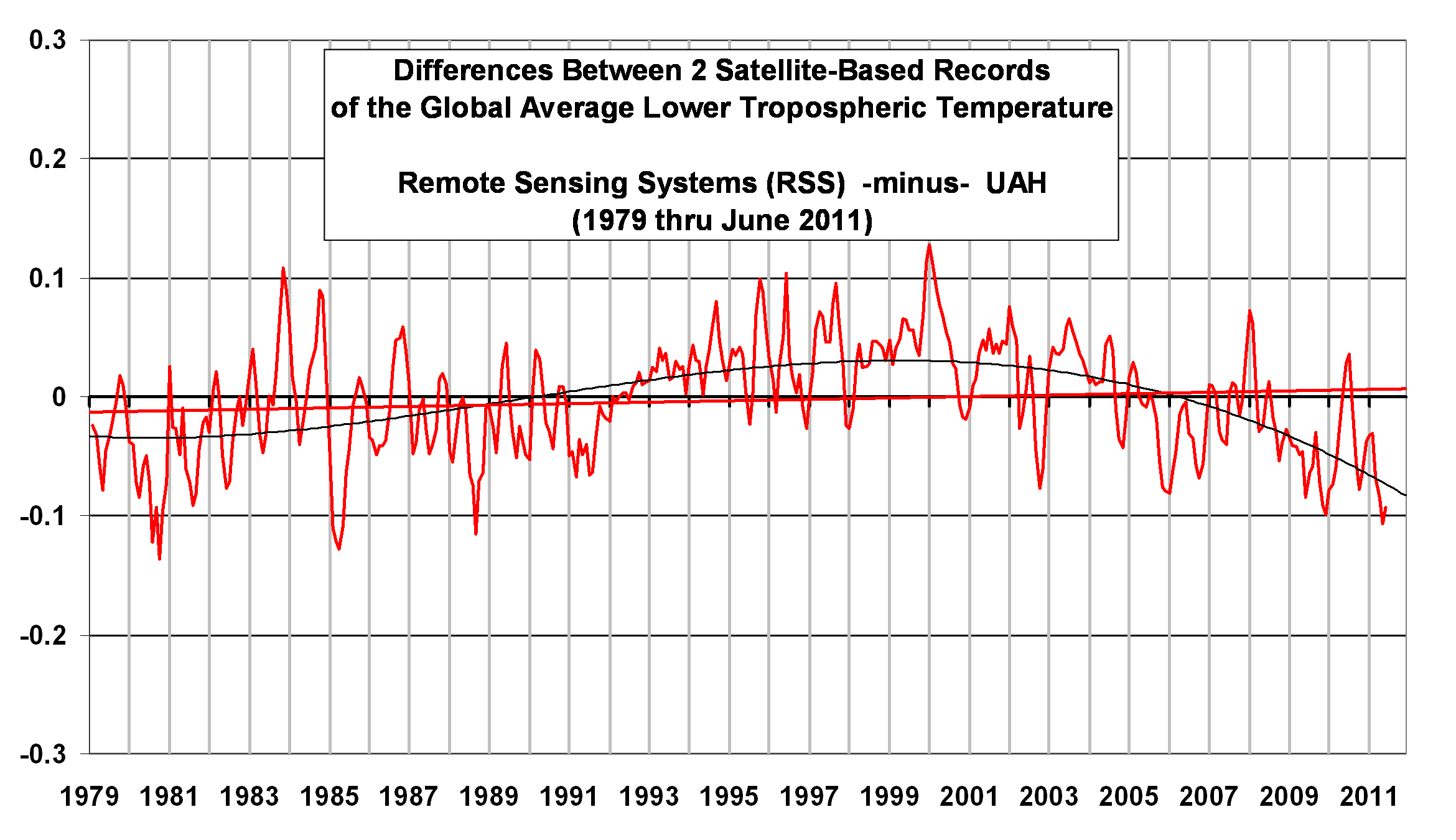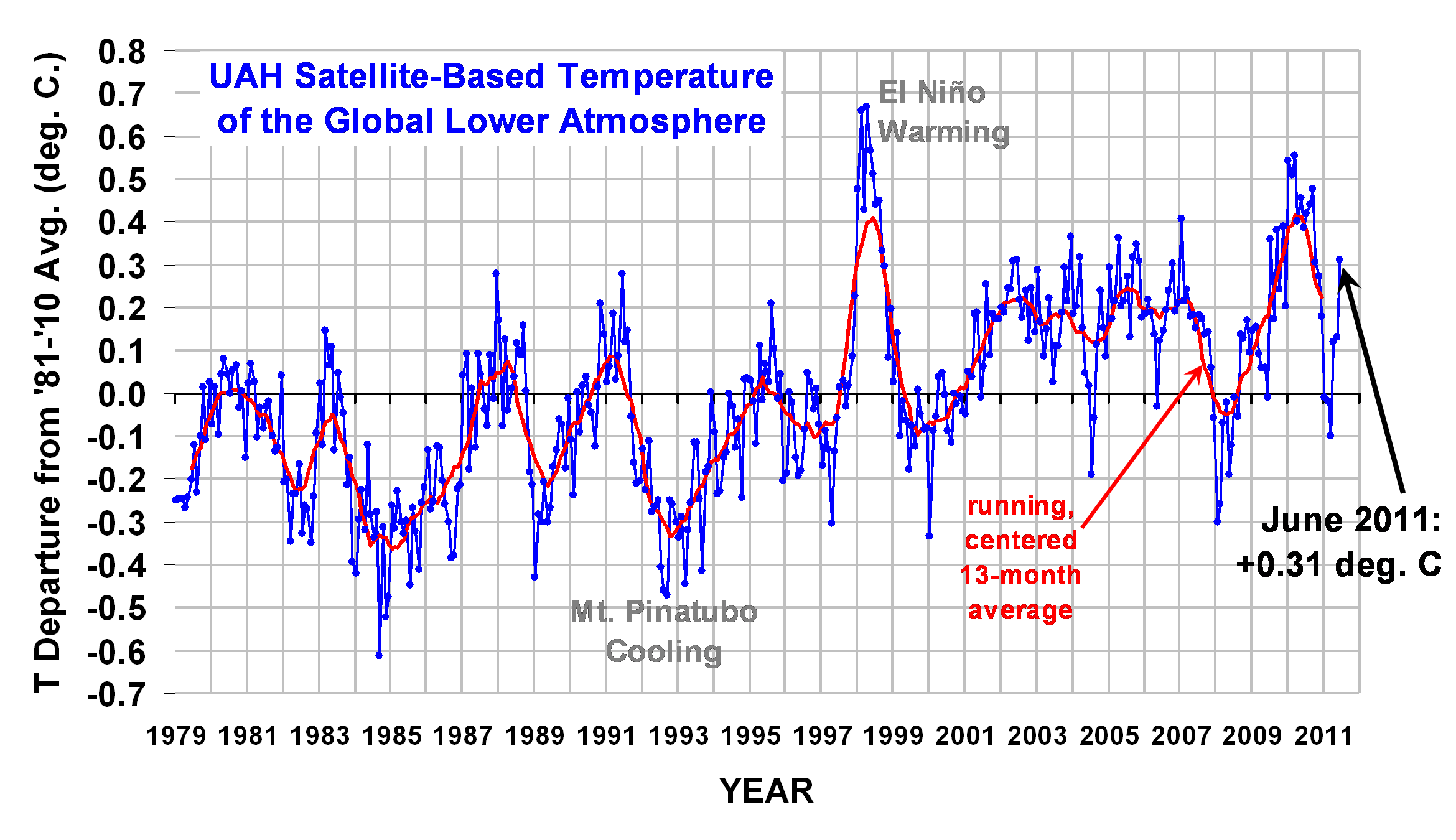After talking with John Christy, I decided I should further expound upon the points I made in my last post.
The issue is that the two main satellite-based records of global lower tropospheric temperature change have been diverging in the last 10 years, with the RSS version giving cooler anomalies than our (UAH) version in recent years, as shown in the following plot:
 (the RSS anomalies have been re-computed to be relative to the 1981-2010 period we use in the UAH dataset)
(the RSS anomalies have been re-computed to be relative to the 1981-2010 period we use in the UAH dataset)
Ten years ago, this meant that the AGW folks were claiming RSS was right and we (UAH) were wrong, since the RSS global warming trends were greater than ours.
But now the shoe is on the other foot, and the RSS linear trend since January 1998 has actually cooled slightly (-0.03 deg. C per decade) while ours has warmed slightly (almost +0.05 deg. C per decade).
John works hard at making our dataset as good as it can be, and has correctly reminded me that he and others have several peer reviewed and published papers recent years on the subject of the accuracy of the UAH dataset:
Christy, J.R. and Norris, W.B. 2006. Satellite and VIZ-radiosonde intercomparisons for diagnosis of nonclimatic influences. Journal of Atmospheric and Oceanic Technology 23: 1181-1194.
Christy, J.R., Norris, W.B., Spencer, R.W. and Hnilo, J.J. 2007. Tropospheric temperature change since 1979 from tropical radiosonde and satellite measurements. Journal of Geophysical Research 112: doi:10.1029/2005JD0068.
Christy, J.R. and Norris, W.B. 2009. Discontinuity issues with radiosondes and satellite temperatures in the Australia region 1979-2006. Journal of Atmospheric and Oceanic Technology 25: OI:10.1175/2008JTECHA1126.1.
Christy, J.; Herman, B.; Pielke, Sr., R.; Klotzbach, P.; McNider, R.; Hnilo, J.; Spencer, R.; Chase, T. et al. (2010). “What Do Observational Datasets Say About Modeled Tropospheric Temperature Trends Since 1979?”. Remote Sensing 2 (9): 2148. doi:10.3390/rs2092148
Douglass, D. and J. R. Christy, 2009: Limits on CO2 climate forcing from recent temperature data of Earth, Energy & Environment, Volume 20, Numbers 1-2, January 2009 , pp. 177-189(13) doi:10.1260/095830509787689277.
Randall, R.M. and Herman, B.M. 2008. Using limited time period trends as a means to determine attribution of discrepancies in microwave sounding unit derived tropospheric temperature time series. Journal of Geophysical Research: doi:10.1029/2007JD008864.
Bengtsson, L. and K.I.Hodges, On the Evaluation of Temperature Trends in the Tropical Troposphere, Clim. Dyn., doi 10.1007/s00382-009-0680-y, 2009.
These papers either directly or indirectly address the quality of the UAH datasets, including comparisons to the RSS datasets.
Based upon the evidence to date, it is pretty clear that (1) the UAH dataset is more accurate than RSS, and that (2) the RSS practice of using a climate model to correct for the effect of diurnal drift of the satellite orbits on the temperature measurements is what is responsible for the spurious behavior noted in the above graph.
Our concerns about the diurnal drift adjustment issue have been repeatedly passed on to RSS in recent years.
What Will the Next IPCC Report Say?
As an aside, it will be interesting to see how the next IPCC report will handle the various global temperature datasets. There have been a few recent papers that have gone through great pains to explain away the lack of long-term warming in the satellite and radiosonde data (the missing “hot spot”) by trying to infer its presence from upper tropospheric wind data (a dubious technique since geostrophic balance is a poor assumption in the tropics), or by using a few outlier radiosonde stations with poor quality control and spurious warming trends.
Call me a cynic, but I think we can expect the IPCC to simply ignore (or at most brush aside) any published evidence that does not fit the AGW template.

 Home/Blog
Home/Blog







